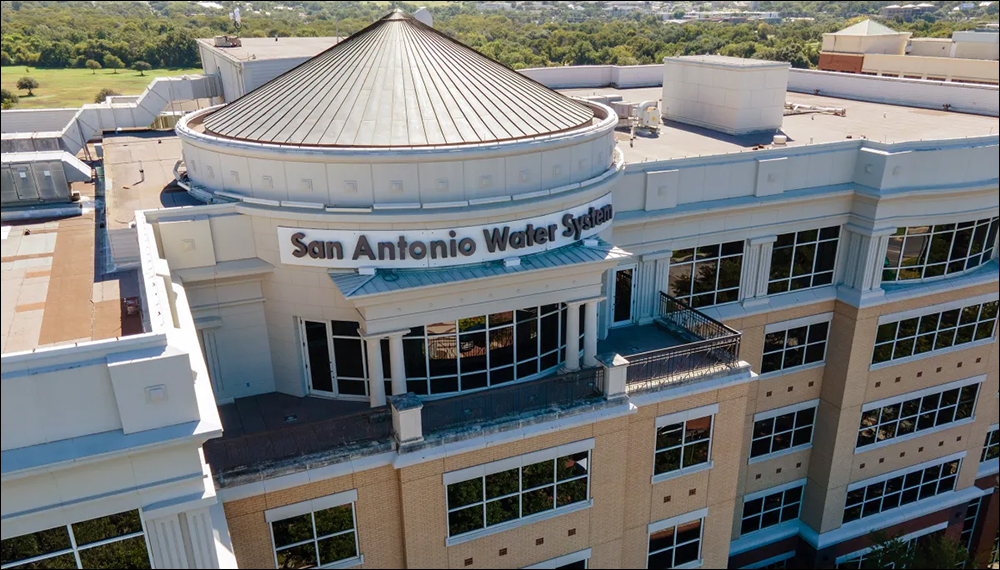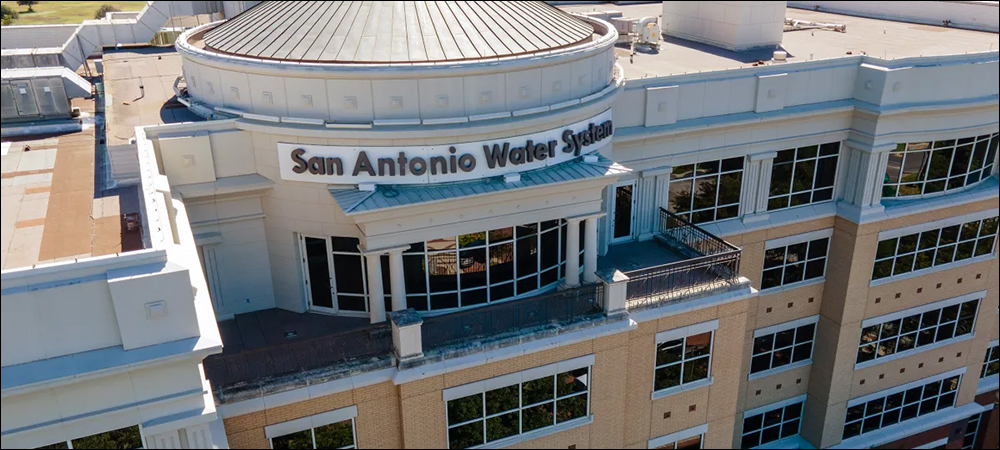A team representing the City of San Antonio, Texas, in partnership with technology and energy providers, has been piloting Internet of Things (IoT) solutions to track water consumption and conditions around streetlights. The goal is to create a more connected city that is more resilient to climate challenges, while improving energy efficiency and optimizing water consumption. The two pilots, conducted in parallel, were conducted to measure IoT technology’s overall performance. The participants will run financial models to determine what makes sense when it comes to deploying the technology, says Jonathan Tijerina, CPS Energy‘s senior director of business and economic development.
CPS Energy provided its network-as-a-service solution for water meter tracking to San Antonio Water System (SAWS), as well as energy services for tracking conditions around streetlights in partnership with the City of San Antonio. IoT technology company Itron provided products and connectivity for both pilots, each of which was launched in 2020. On December 6, 2021, the SAWS water pilot received approval to move into full deployment, which is scheduled to begin in late spring 2022. The streetlight metering pilot is currently in the final evaluation phase, Tijerina reports, with the next steps to be determined during the first quarter of next year. The streetlight metering pilot is ongoing.

CPS Energy has been planning potential pilots for nearly a decade. “Conversations go back many years about leveraging the network for additional products or services,” Tijerina states. In fact, he recalls, when CPS Energy first installed a wireless network in 2012, “We always had in our planning the possibilities of adding more services to this network.” At that time, CPS Energy designed the core structure to build out its advanced metering infrastructure (AMI) network.
Water Pilot
CPS Energy provides the water-metering solution to track the community’s water utility capacity. The pilot takes that effort a step further by allowing meters for 2,500 residential and business participants to wirelessly transmit data regarding water consumption at each site. SAWS launched the pilot in March 2021, and it ran through last September. Each water meter was wirelessly connected to the Itron mesh network that CPS Energy deployed, according to Dan Evans, Itron’s senior director of smart cities and smart lighting.

Jonathan Tijerina
With the network, SAWS was able to automatically collect meter data wirelessly regarding water usage at its customers’ homes and businesses. In each case, wireless sensors provided by SAWS were connected to water meters. Data was then collected by the water meters and transmitted by the IoT unit via the Itron mesh network installed by CPS Energy.
The collected data then resided in Itron’s Temetra software platform, a dashboard for analytics and alerting, which was operated by SAWS. By detecting the amount of water usage virtually, the system was able to provide residents with data about potential water leaks and consumption rates. That information could thus help users diagnose problems or change behaviors that would allow them to save money and avoid waste.
Smart-City and Streetlighting Pilot
The second pilot tested smart-city technologies connected to existing streetlighting fixtures. The goal, according to CPS Energy, was to do more than just track the lamps’ brightness. The company partnered with its owner, the City of San Antonio, to test various use cases involving parking availability, flooding detection, air-quality measurements and noise levels. This pilot ended in September 2021, and CPS Energy and the city are now evaluating the results.
For this pilot, Itron acted as the coordinator and primary point of contact to ensure the numerous parties, including various city departments (public works and public safety, for example), got what they wanted out of it. “This included arranging regular meetings to review data and findings,” Evans says. The pilot included noise and air-quality sensors, a field tool for tracking streetlighting and smart-city sensor assets, and virtual sensors for monitoring weather and air quality. The project is also testing water-level sensors and a weather station, in addition to a smart parking solution and digital signage.

Dan Evans
Itron built out its mesh network for the pilot, incorporating 45 streetlights spread across three separate areas in San Antonio, known as Innovations Zones. One was designated as Downtown, another was called the Medical District and the third was Brooks City Base. These three zones were identified by the city as unique locations where IoT sensor data could be of value. In each zone, Itron used a different arrangement of sensors to demonstrate the use cases. Smart parking, for instance, was limited to only the Downtown zone.
CPS Energy deployed noise and air-quality sensors from technology company Rongwen to measure ambient noise level in decibels—coming from traffic, aircraft or other sources—as well as testing for specific air pollutants. Smart-city systems provider TerraGo supplied the field tool for measuring the amount of streetlighting, while climate software company Tomorrow.io contributed virtual sensors for monitoring weather, as well as air temperature and humidity levels. Utility Systems Science and Software (USSS) provided water level sensors for measuring distance to water and its depths, as well as a weather station, while Cleverciti supplied sensors that detect the availability of parking spaces on the street and display this information on digital signs.
The streetlight sensor measures energy consumption and provides visibility regarding streetlight faults when they occur. All data collected from the sensors was stored in Itron’s SLV smart-city platform. The information was then exported to the city’s data lake to be leveraged by the public or interested parties, such as universities and developers. The SLV platform provided alerting and analytics for all smart-city data collected. For instance, if air quality became hazardous, or if pooling water was detected, a notice could be sent directly to city employees or managers.
“This pilot was unique and challenging,” Evans states, “in that it required substantial collaboration and communication to succeed.” While the project was driven by CPS Energy, the city’s Office of Innovation brought together several other departments to review and assess the relevant smart-city applications and their associated data. Not only did the information being analyzed vary across each department, Evans says, but the perspectives on how technology should be leveraged also differed.
“CPS Energy hopes to wrap up evaluation on the smart streetlights and controls in Q1 of next year,” Tijerina reports, “and will decide on the next steps then.” On December 7, 2021, SAWS provided Itron with the final approval to move forward with full AMI deployment. “The savings and efficiencies from leveraging our existing network have lots of value for our shared customers and community.” By leveraging the 2012 network investment, he says, “Our partners, SAWS, will now be able to offer similar services and efficiencies that come with AMI.”
Itron is the largest provider of smart-city solutions, Evans claims, with more than four million endpoints under its management. In England, for example, London has deployed a life preserver monitoring sensor along the River Thames, while in France, Paris is using Itron sensors to monitor city clocks, and Canberra, Australia, has deployed dynamic lighting triggered by motion sensors.
In San Antonio, Tijerina says, the benefits could be numerous, ranging from forecasting flood events and monitoring extreme weather to managing street lighting. The mesh network is designed to accommodate additional applications as needed, he explains. “We knew additional products and services for our shared customer base could be realized,” he states. “We are excited about the possibility of this becoming a reality.”


